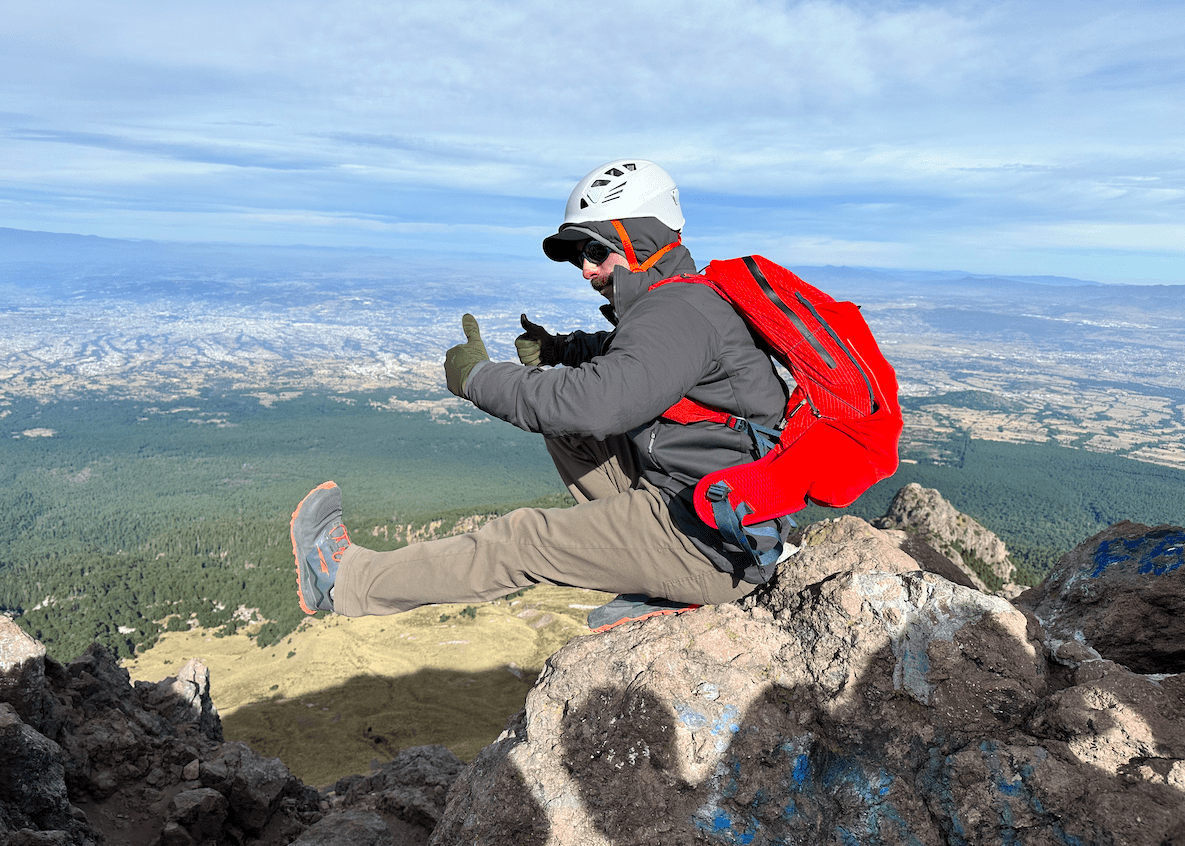Spark R&D Hardboot Setup Review
Evan Green and Aaron Rose
Hardboot setups (using AT ski boots for backcountry snowboarding) were once an obscure corner of the niche sport of splitboarding, relegated to experienced riders who were willing to spend hours tinkering and testing garage grown prototypes. In recent years, an increasing number of split-hardbooters have began to take the advantages of improved efficiency on the skin track and powerful precise turns on the way down
In response to this growth, splitboard binding manufacturer Spark R&D developed a durable and reliable interface system. Now, it seems the transition to hardbooting is more accessible and affordable than ever.

The Engearment team spent the season testing the Spark R&D toe piece, bindings, pucks, and heel risers in everything from pow filled glades to steep and committing 14er descents to resort mogul runs. The result? A nearly bulletproof system that excelled in all conditions with very few compromises, transforming any splitboard into a versatile alpine tool.
The Spark R&D hardboot setup includes the Spark Tech Toes, the Spark Dyno DH binding, the Hardboot Dual Height Wires, and the Spark Canted Pucks. It should be noted, that the biggest piece to the hardboot puzzle, which ski boots to use, will not be covered in this review.
Spark Tech Toes

The Spark Tech Toes are the star of the show and allow splitters to tap into the efficiency and control of the Dynafit pin system. There’s no debating that the pivoting toe pins locked directly to your boots increases uphill touring ability, lowers weight underfoot, and allows for better purchase side-hilling than a snowboard boot strapped to a plate. Built-in claw mounts also allow the use of the D-Rex crampons for more security on the uphill.

The Spark Tech Toes mount directly into the factory splitboard touring bracket holes without the need for adapter plates or drilling. These toe pieces are more reliable and stronger than any previous option for splitboarders, providing a bit of peace of mind while deep in the backcountry.

Weight weenies should note that using the Spark adapter plates and Dynafit bindings can shave off a few ounces. Locking the toes into place was easy to do with the handle of most ski poles. Quickly stepping in and out of the bindings for snack breaks or springtime skin track obstacles was a welcome change from the mess of multiple ratchet straps.
Likewise, transitioning from skinning to bootpack is a simple affair without having to worry about bulky bindings getting in the way. Overall, the toe pieces held up to some serious abuse over the season with almost no unintended releases or malfunctions, of which we could blame on user error. We would love to see Spark R&D add a small notch to the pins for self-clearing ice, as found on most Dynafit models.

Although not officially recommended, we found split skiing using the Tech Toes was also a big improvement. #Freetheheel.
Spark Dyno DH Binding + Canted Pucks

The Spark Dyno DH binding and canted pucks provide a familiar interface for anyone accustomed to using the Spark Tesla T1. The classic Spark baseplate and snap ramp remains for simple and speedy use in harsh or snowy conditions.
Spark R&D ditched the straps, buckles, and highback in favor of a sturdy set of stainless-steel toe and heel bails that attach to ski boots similarly to automatic crampons. A note that this binding fits boot soles 255mm 340 mm and can only be used with ski boots that have a toe and heel welt, unlike the Hoji or TLT 7.
The binding is easily adjustable to a wide range of boot sole lengths (BSL) but does require tools and the included spacing diagram to make adjustments. The rear heel bail stays upright by itself allowing for an easy step in followed by a quick clamp of the front toe bail, speeding up transitions by a hair.

The bails also fold down to save some space when stored in a pack on the skintrack. The general technique of packing the bindings away for the uphill does take a good chunk of weight off your feet which is said to help increase endurance by removing weight from the portion of the body that moves the most. This can be a disadvantage as you can easily leave the bindings in the snow while transitioning uphill or struggle to find space in your pack for them.

When snowboarding downhill the firm connection between the Dyno DH bindings and ski boots allowed for quick and precise engagement when making a turn and increased power transfer from edge to edge. The Spark Canted Pucks and Dyno DH bindings play together perfectly as expected. Standard non-canted pucks can be used but the canted pucks are highly recommended and worth the small weight penalty.
Engearment testers found that a slightly wider stance worked best to offset the increased lateral stiffness of ski boots and canting pucks helped to maintain a comfortable and natural stance on the board. The Dyno DH binding stays true to Sparks simple and sturdy design philosophy by providing a trustworthy and easy to use hardboot binding.
With the Solid Board Pucks, snowboarders can pull double duty at the resorts and in the backcountry with a versatile quiver, although they may be more inclined to use solid bindings for aggressive park riding.

Spark Hardboot Dual Height Risers

The Spark Hardboot Dual Height Risers are built to screw right into standard splitboard mounting points and feature dual height options for varying degrees of steep skinning. These risers are also adjustable for varying boot sole lengths. The tele ski style risers are easy to engage and disengage with a ski pole.
In retrospective, the Spark dual height wires may be the only area of their hardboot system in need of further refinement as they are less affordable than the similar Voile risers and lack the durability and heel lock feature of the more expensive Phantom risers. Be careful of putting them on backwards as they’re not designed to hold the wires this way.
Conclusion

All together, Spark R&D’s hardboot system provides an affordable, easy to use, and reliable system for anyone touring and riding in the backcountry. With a balance of price, weight, and adjustability compared to other options on the market, this setup may be the most ideal for those looking to get into split-mountaineering without breaking the bank.
With all the cards on the table, the Engearment testers felt that hardbooting provides a more efficient experience across the board in terms of touring, bootpacking, and riding. We also felt it was a better investment in the long run with the durability that AT ski boots provide over high-end softboots, which our testers felt like they had to replace every season.
For the all-mountain backcountry rider who faces a variety of conditions and wants the best tool for everything from slashing pow to harvesting corn, it’s worth taking a “hard” look at Spark R&D’s hardboot system.
A COST & WEIGHT BREAKDOWN
Spark Tech Toes – $160 – 5.11 oz/ea (145g) – 10.22 oz/pair (290 g)
Dyno DH Bindings – $250 – 0.90 lb/ea (409g) – 1.80 lb/pr (818g)
Hardboot Dual Height Wires – $55.00 – Weight: 3.46 oz/ea (98g) – 6.91 oz/pr (196g)
Canted Pucks – $75.00 – 11.36 oz/pr (322g)
Total Cost – $540
Total Weight – 1626 grams or 3.56 lb






Leave a Reply